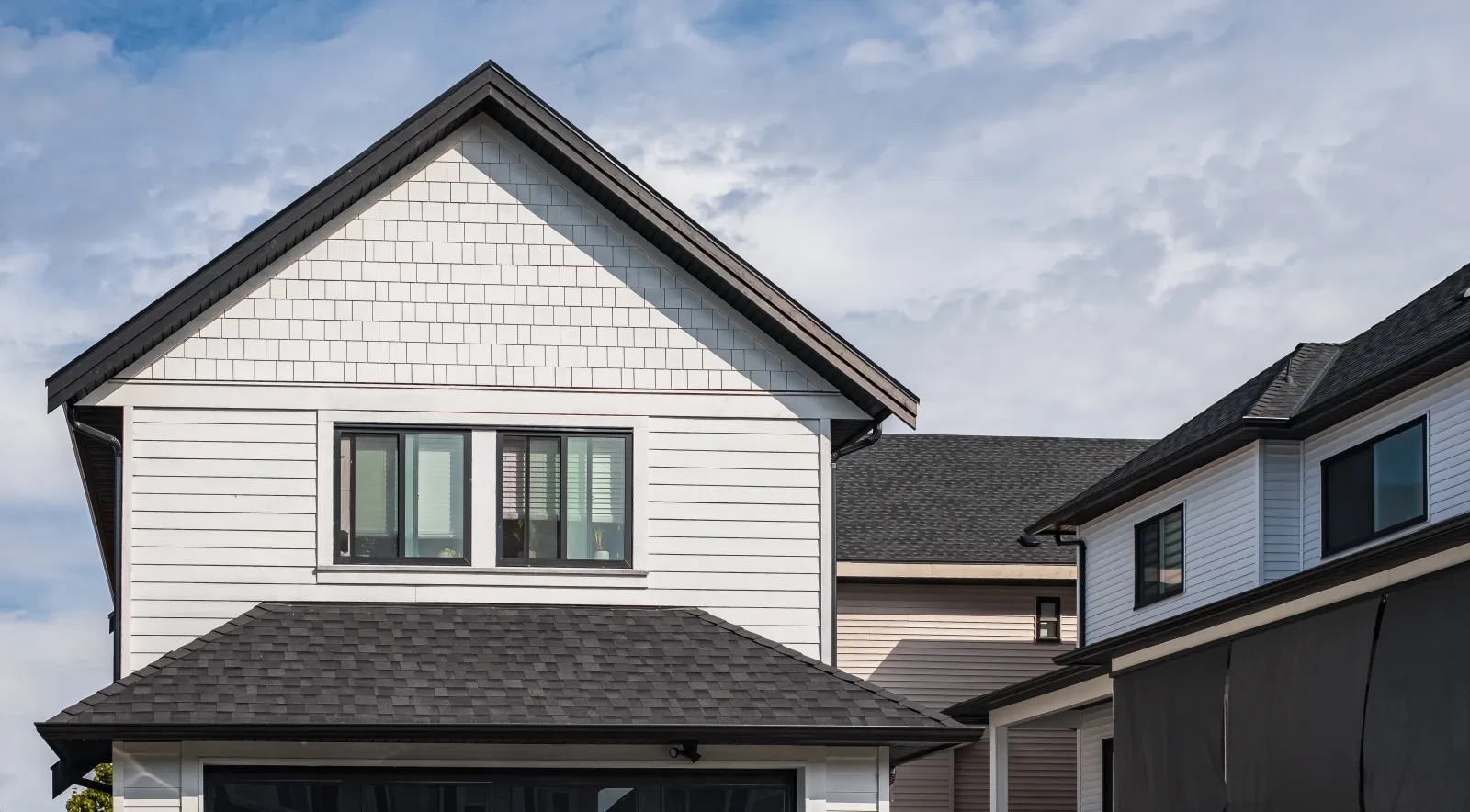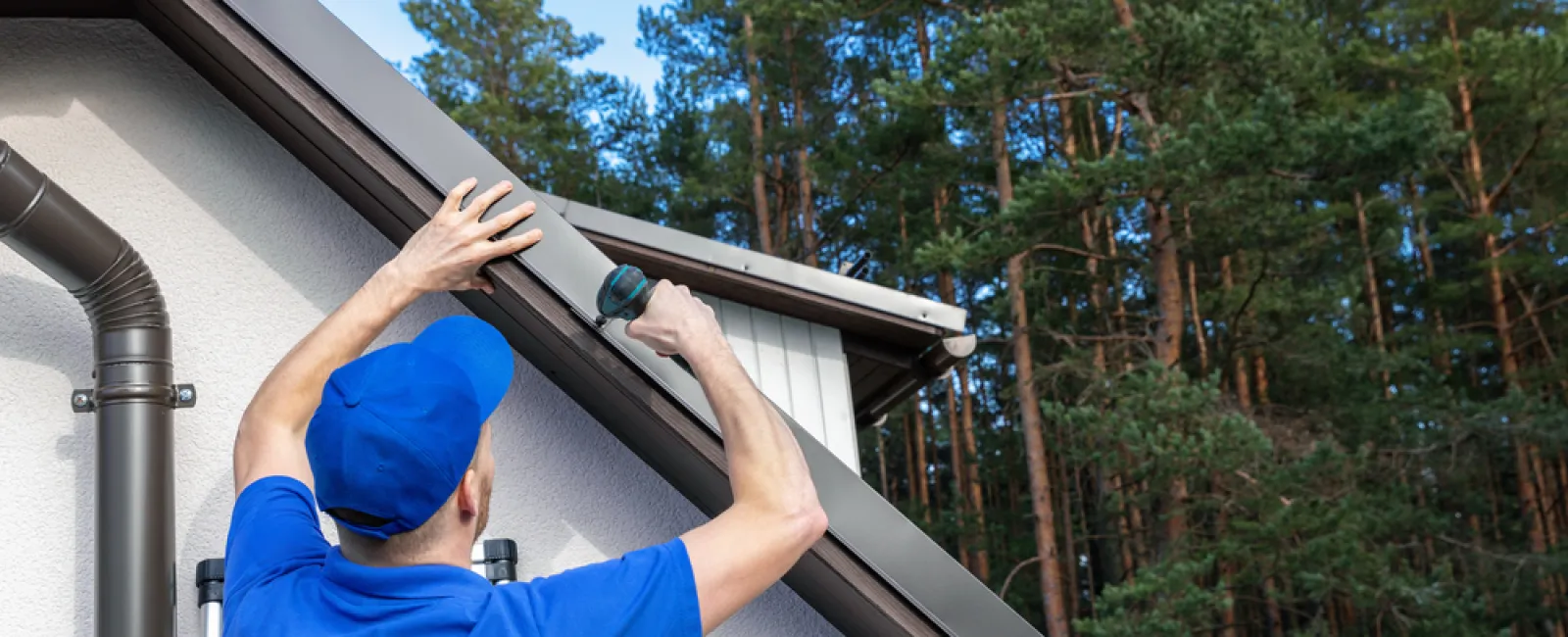When it comes to maintaining your home, an important component is
the drip edge of your roof. This essential feature plays a vital role in
protecting your roof, preventing water damage, and extending the lifespan of
your home. Whether you're a seasoned homeowner or new to property upkeep,
understanding the significance of a drip edge can save you from potential
headaches down the road.

An Overview of a Roof's Drip Edge
A drip edge is an essential part of your roof's structure, designed to protect the edges and keep your home safe from water damage. It is a metal strip, typically made from aluminum, galvanized steel, or copper, that is installed along the roof's perimeter. The main job of the drip edge is to direct rainwater away from the fascia (link to new page on fascia board) and into the gutters, which helps prevent water from seeping under the shingles.
By guiding water away, the drip edge helps stop wood rot and other forms of damage that can compromise the integrity of your roof. Without this critical feature, water can easily get underneath the shingles, leading to issues like leaks, mold growth, and even structural damage over time.
The design of a drip edge is simple yet highly effective. It sticks out slightly beyond the edge of the roof, creating a barrier that water cannot easily cross. This helps ensure that water flows off the roof properly, reducing the chances of leaks and maintaining the strength and durability of your home.
Even though it might seem like a small detail, the drip edge is
incredibly important for the overall health of your roof. Its absence can lead
to significant problems, such as roof damage and interior leaks, which can be
costly and time-consuming to repair. Therefore, understanding the role and
importance of the drip edge can help you take better care of your home and
avoid potential issues in the future.
Why Your Roof Needs a Drip Edge
A drip edge is essential for your roof because it provides crucial protection against water damage. By installing a drip edge, you ensure that water is directed away from the fascia and into the gutters, reducing the risk of wood rot and mold.
In many places, having a drip edge is not just recommended but required by local building codes. This regulation highlights its importance in maintaining your home's structural integrity. Skipping this step during roofing installation can lead to legal issues, as your home may not pass inspections without a proper drip edge.
Besides protecting against water damage, a drip edge also serves as a barrier to pests. Small animals and insects can enter your home through the roof if there is no drip edge to block their path. This can lead to further damage and additional repair costs. By installing a drip edge, you make your home less inviting to these unwanted guests.
Additionally, a drip edge can protect your home from wind-driven
rain. This type of rain can cause significant damage to underlying components.
The drip edge works with the underlayment and
the ice and water shield to
guide rain off of the roof.
Different Types of Roof Edges—Materials and Profiles
Drip edges are available in various materials and profiles, each with its unique benefits. The most common materials include:
- Aluminum: This is a popular choice because it's lightweight and resistant to rust. Aluminum is durable and cost-effective, making it ideal for many homeowners. Plus, it can be painted to match your roof color, offering both functionality and aesthetic appeal.
- Galvanized steel: Known for its strength and durability, galvanized steel has a zinc coating that helps prevent rust. It's a great option for areas with harsh weather, providing robust protection against the elements.
- Copper: Although more expensive, copper drip edges offer unmatched durability and a distinctive look. Over time, copper develops a natural patina that adds character to your roof, making it an appealing choice for those who want a blend of durability and beauty.
When it comes to profiles, drip edges mainly come in three types:
- L-shaped: This is the most basic profile, designed to direct water away from the edge of the roof efficiently. It's simple yet effective, featuring a 90-degree angle and lower flange.
- T-style: This profile offers additional support and coverage, making it suitable for roofs with larger overhangs. It provides more comprehensive protection against water damage to the fascia.
- F-style: Known for its extended size, this profile is often installed on rake edges or over shingles.
Protecting and Maintaining Your Drip Edge
Once your drip edge is installed, keeping it in good condition is essential for its long-term performance. Start by inspecting it regularly, especially after storms. Look for any signs of damage, rust, or sections that have come loose.
In addition to inspections, make sure your gutters are clean and
free of debris. Clogged gutters can cause water to overflow and undermine the
function of the drip edge, leading to potential water damage.
If you notice any problems like bending, rusting, or detachment, it's crucial to address them promptly. Contact a roofing professional for repairs to prevent minor issues from turning into major headaches.
If you're located in New Hampshire, the North Shore of Massachusetts, or Southern Maine, Master Roofers is your next call if you're having issues with your drip edge. Get in touch online or call us at (603) 623-4973 for a quick and easy quote.
Looking for more information on everything that goes
into a functioning roof? Check out the table of contents and main page for our
guide to the anatomy of a roof.

